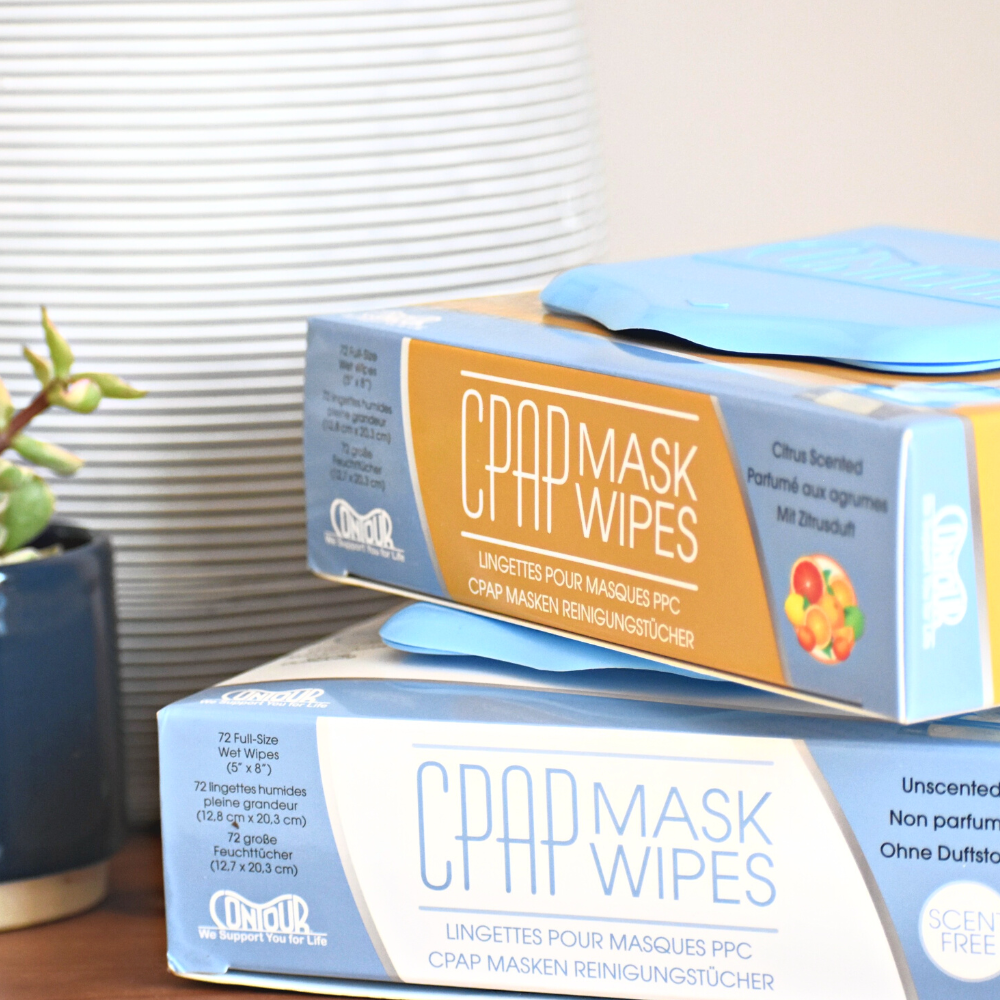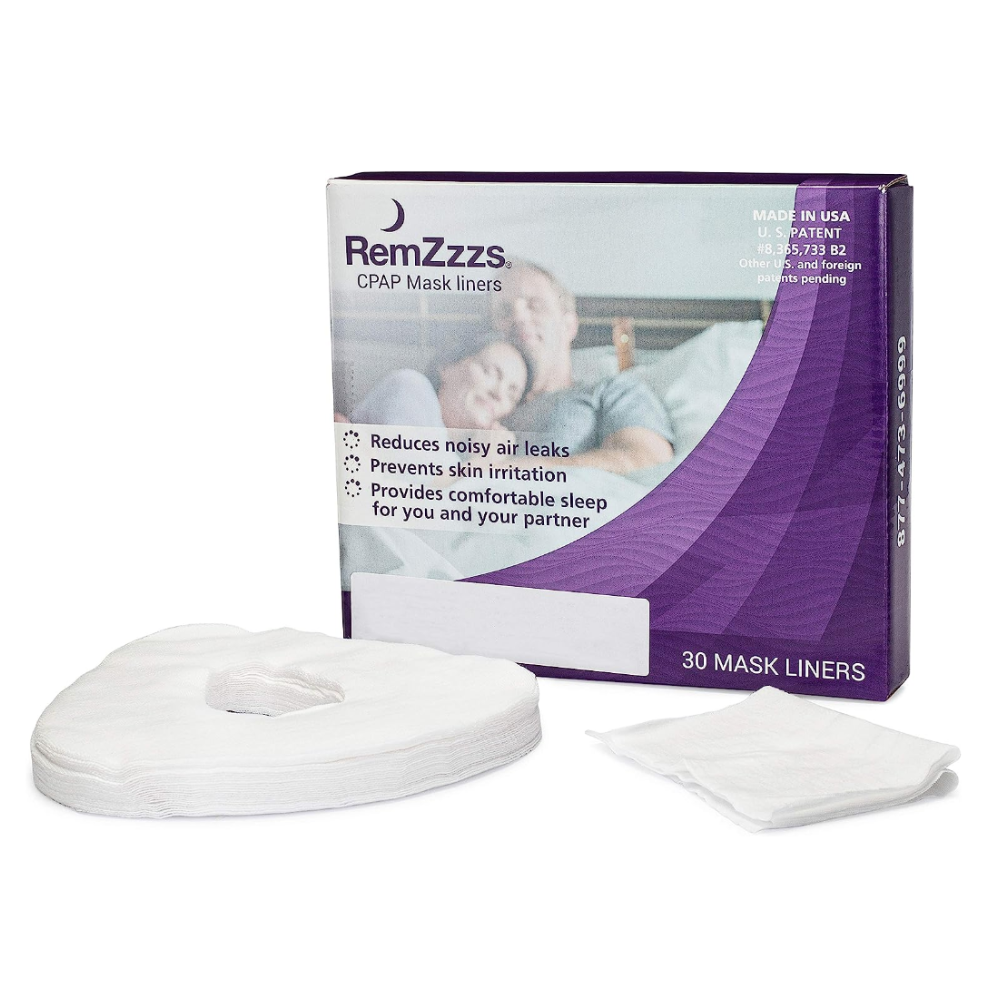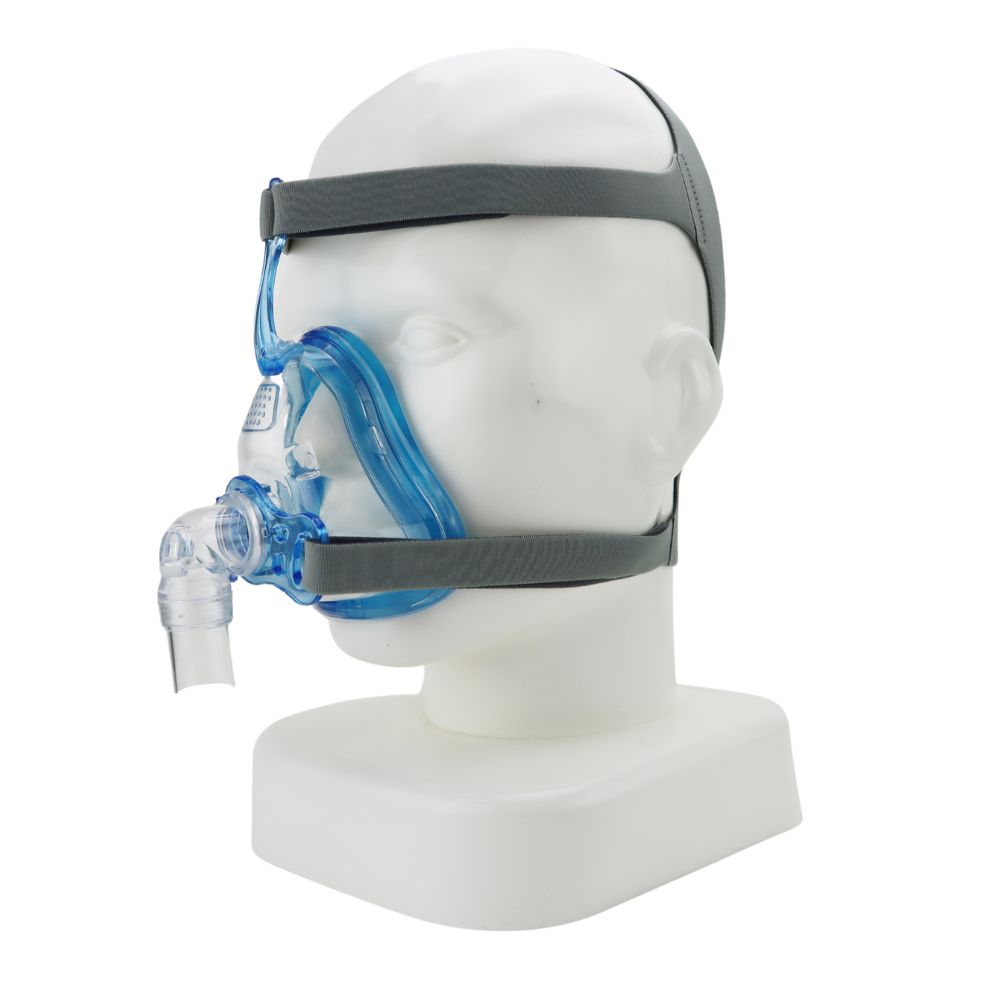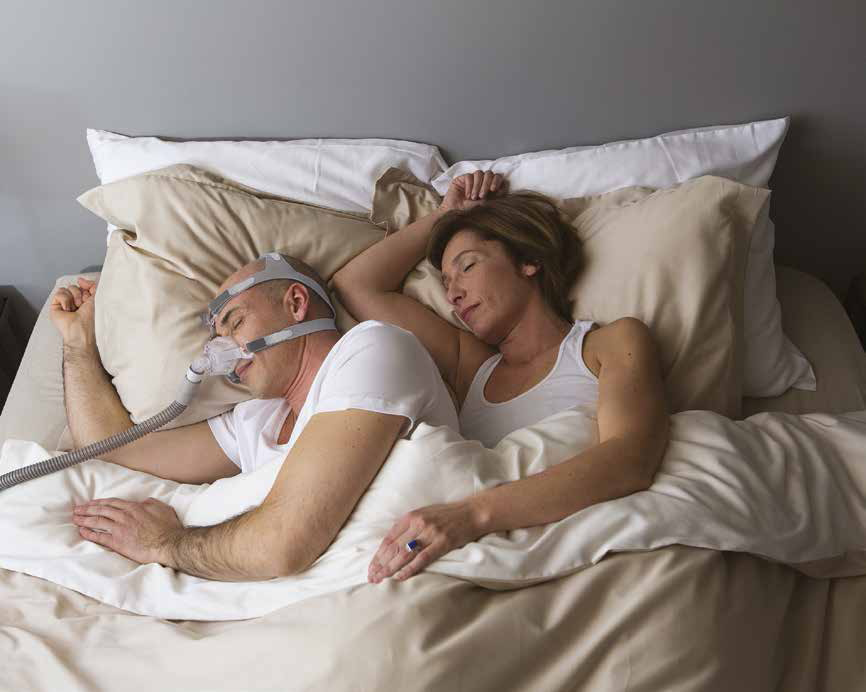Last updated on November 13th, 2024 at 12:25 pm
CPAP therapy (Continuous Positive Airway Pressure) can be life-changing for people with Sleep Apnoea. But, it can cause problems that make it difficult to maintain comfortable and effective treatment.
One of the most common side effects is skin irritation or damage where the mask sits on the face. Here, we explain the three most frequent causes of this problem and how to resolve them.
How do I stop red marks from my CPAP mask
1 – Bacteria in your CPAP mask
The most common cause of skin irritation is bacteria. The silicone in the CPAP mask cushion gradually gets worn away by skin oils, creating microscopic pockets on the cushion surface where bacteria can thrive.
If you find that the red marks start occurring after a few weeks of using a mask, bacteria is almost certainly the cause. So the solution is simple; daily mask cleaning should keep bacteria to a minimum. Using a pack of CPAP mask wipes makes it simple to keep your mask clean.
However, while this will remove the majority of dirt and bacteria, some will remain in the pockets described above, particularly as the mask gets older and the pockets increase in size and number.

Even a visibly clean mask can be home to thousands of bacteria, and the red marks can remain despite thorough cleaning.
The only way to kill bacteria entirely is to sanitise the equipment using a device such as the SoClean 2 CPAP Sanitiser. The device kills 99% of bacteria; even those tucked away out of reach of even the most thorough cleaning.
If bacteria is causing your skin irritation, SoClean should provide an immediate improvement in red marks.
At £239, the SoClean is not a cheap fix. However, it has a 30-day money-back guarantee, so you can see if it solves your problem. Under 1% of customers have returned theirs, so the chances of finding it beneficial are very high. We have the UK’s lowest price on the SoClean.
Regularly cleaning your CPAP mask can prevent wear and tear, so you don’t have to replace your CPAP mask parts so often.
2 – Silicone allergy
CPAP rash, CPAP dermatitis and red marks caused by bacteria tend to develop over time. If your red marks appeared within the first one or two uses of a new mask, a silicone allergy is more likely to be the problem.
This problem is slightly trickier to solve, as nearly all CPAP masks use silicone.
Even gel masks have a fine silicone membrane.
However, the SleepWeaver range of CPAP masks are made from fabric, making them the most “skin-friendly” masks on the market.
CPAP Mask Liners
Another option is to use a mask liner, such as RemZzzs. These cotton liners sit between the mask and your face, creating a barrier that prevents direct contact with the silicone. These are one of our most popular accessories provided with consistently excellent reviews, perhaps unsurprising considering how common silicone allergies are.
Not only do these clever liners protect against red marks, but they also:
- Prevent air leaks and air leak noise.
- Allow you to use nighttime skin care products.
- Prevent skin irritation, CPAP acne and CPAP dermatitis.
- Assist in holding your mask in the correct position.
A sample pack costs just £7.49, so you can quickly determine if the liners suit you.

3 – A poor-fitting CPAP mask
A common cause of red masks is an ill-fitting CPAP mask. Sometimes CPAP mask leaks can cause patients to tightly strap the mask to their face, causing red marks and skin breakage. CPAP users also find themselves getting a CPAP dry mouth and throat because of an ill-fitting mask.
One option is to loosen the mask. Sometimes a looser fit allows the mask space to adjust to suit. Also, put on your mask while lying down, as gravity changes the shape of your face. A good fit upright does not always mean a good fit lying down. Using a CPAP humidifier can also eliminate a dry mouth and throat; remember to use distilled water in your humidifier.
If you cannot get a good fit, you can try a different shape mask that avoids the area where you are experiencing fitting problems.
For example, full-face masks often leak and cause skin damage around the nasal bridge. An under-nose mask, such as the Resmed AirFit F30, can avoid this problem area entirely.
You could also try a different mask material – Sleepnet AirGel masks; for example, use an incredibly pliable gel in the cushion.
Allowing the mask to spread the pressure more evenly across your face rather than have it concentrated in one or two spots.
The Ascend Full Face has a “Guaranteed Fit“, meaning you can return it for a refund if it doesn’t work for you within 28 days.
If your current mask isn’t fitting well, the Ascend Full Face or Ascend Nasal Mask are risk-free options.

To find your mask size, scroll down the product page to the ‘downloads‘ tab and download the sizing guide.
If you’re a side sleeper, take a look at our CPAP masks for side sleepers page.
Additionally, the RemZzzs liners mentioned can also help reduce air leaks, allowing the headgear to be slightly looser and reducing the stress on your skin.
We’re here to help with your CPAP red marks
To get the most out of your CPAP equipment, cleaning your CPAP equipment is essential.
Waking up with red marks and skin damage from your CPAP mask can be uncomfortable and embarrassing. Getting rid of these marks will dramatically improve your CPAP therapy.
If none of the above solves the problem for you, please contact us with more information about your issues, such as the problem you are experiencing and the mask you are using, and we can see what we can do to help.
Published: 16th July 2019


